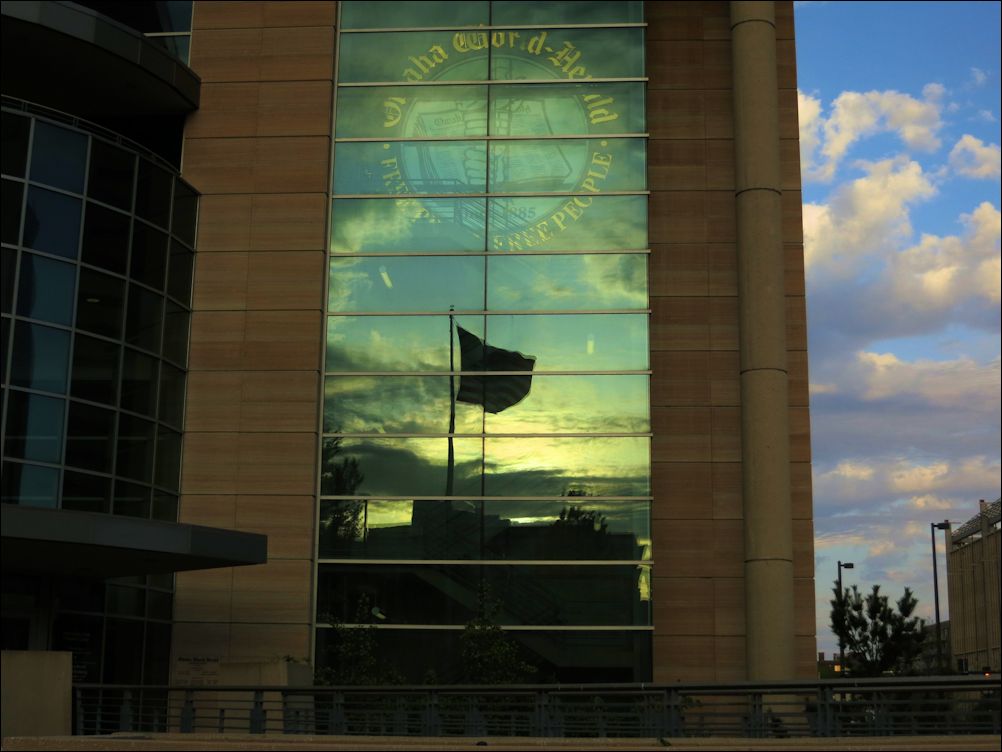Community news outlets should build on high voter turnout in presidential election
More than 160 million people voted in the US presidential election, more than any other election in US history.
About two-thirds of eligible voters cast ballots, the most since 1900 when more than 7 in 10 eligible American voters cast ballots, according to numbers from the United States Election Project.
The youngest voters, ages 18 to 29, were key to the surge in voting. As the last votes were being counted, Gen Z and Millennials turnout topped 53 percent, besting the previous high of 51 percent, set in 2008, according to the Center for Information & Research on Civic Learning and Engagement at Tufts University.

Voters in Des Moines, Iowa, precincts 44, 58 and 59 cast their ballots at Callanan Middle School. (Photo by Phil Roeder via Flickr)
This creates an incredible opportunity for us to make the case for our own role, as journalists, in civic engagement, particularly to that young demographic we so far have been largely unsuccessful in courting as subscribers. It is our responsibility to remind our readers the importance of staying involved now that a president has been elected. After all, we will be the ones holding elected officials accountable for the promises they made as candidates. Our role as fact-checkers will continue.
It won’t be easy. Our country is deeply divided along partisan lines, and people tend to remain in their own bubbles with similar viewpoints, creating echo chambers that leave them unchallenged and too often uninterested in facts that don’t support previously held beliefs. A Pew Center report this fall found that roughly four-in-ten registered voters say that they did not have a single close friend who supports the other major party candidate.
Journalists are no exception. Our readers suspect that we are in the “liberal” camp of voters, and a 2020 study from three academic researchers confirmed that indeed, a dominant majority of journalists identify as liberal or Democrats. But the study also found little evidence that our political leanings impact our journalism. We have failed to communicate the latter to our readers.
Still, even if many of our newsrooms are operating virtually at the moment because of the pandemic, we risk letting our own echo chambers reinforce how we see the world if our colleagues are the people with whom we primarily interact around the election. We have an obligation to seek out viewpoints that differ from our own and to do it purposefully, through our work and through our personal social media networks.
Since the hand-wringing of 2016, national news organizations visited our smaller communities to understand how President Trump could be elected. That continued as journalists tested his popularity in the days leading up to the election. Most published caveats about national polling for fear of getting caught again with a narrative that doesn’t match a reality that we well knew in our smaller communities.
I don’t need to read an op-ed in the New York Times about why white Midwesterners voted for Trump. These are my people. I grew up with them and am friends with them on Facebook. (I worked with several at our college newspaper in Southern Illinois.) Many of my family members support Trump.
After the election ended–and when the pandemic ends, we will still send birthday greetings, gather for Thanksgiving and celebrate milestones.
Likewise, our communities will still gather. People who supported Donald Trump will share church pews and mosque carpets with those who supported President-Elect Joseph R. Biden. People who think the coronavirus is the same as the flu will share the grocery store aisles with nurses from our local emergency room. Teachers who came out for Biden will have the children of voters who cast ballots for Trump in their classroom.
These groups will speak to each other and argue and point fingers and retreat to their bubbles for reassurances.
No matter what happens, we need to be there.
A version of this story first appeared in Publisher’s Auxiliary, the only national publication serving America’s community newspapers. It is published by the National Newspaper Association. GJR is partnering with Pub Aux to re-print Jackie Spinner’s monthly “Local Matters” column on our website. Spinner is the editor of Gateway Journalism Review. Follow her on Twitter @jackiespinner.

